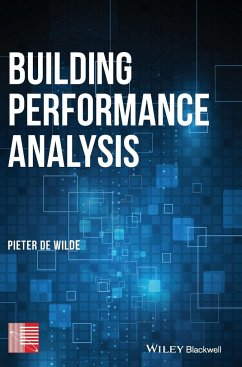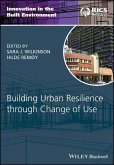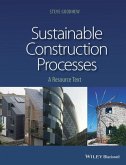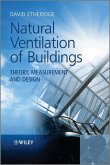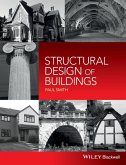Explores and brings together the existent body of knowledge on building performance analysis
Building performance is an important yet surprisingly complex concept. This book presents a comprehensive and systematic overview of the subject. It provides a working definition of building performance, and an in-depth discussion of the role building performance plays throughout the building life cycle. The book also explores the perspectives of various stakeholders, the functions of buildings, performance requirements, performance quantification (both predicted and measured), criteria for success, and the challenges of using performance analysis in practice.
Building Performance Analysis starts by introducing the subject of building performance: its key terms, definitions, history, and challenges. It then develops a theoretical foundation for the subject, explores the complexity of performance assessment, and the way that performance analysis impacts on actual buildings.In doing so, it attempts to answer the following questions: What is building performance? How can building performance be measured and analyzed? How does the analysis of building performance guide the improvement of buildings? And what can the building domain learn from the way performance is handled in other disciplines?
_ Assembles the current body of knowledge on building performance analysis in one unique resource
_ Offers deep insights into the complexity of using building performance analysis throughout the entire building life cycle, including design, operation and management
_ Contributes an emergent theory of building performance and its analysis
Building Performance Analysis will appeal to the building science community, both from industry and academia. It specifically targets advanced students in architectural engineering, building services design, building performance simulation and similar fields who hold an interest in ensuring that buildings meet the needs of their stakeholders.
Hinweis: Dieser Artikel kann nur an eine deutsche Lieferadresse ausgeliefert werden.
Building performance is an important yet surprisingly complex concept. This book presents a comprehensive and systematic overview of the subject. It provides a working definition of building performance, and an in-depth discussion of the role building performance plays throughout the building life cycle. The book also explores the perspectives of various stakeholders, the functions of buildings, performance requirements, performance quantification (both predicted and measured), criteria for success, and the challenges of using performance analysis in practice.
Building Performance Analysis starts by introducing the subject of building performance: its key terms, definitions, history, and challenges. It then develops a theoretical foundation for the subject, explores the complexity of performance assessment, and the way that performance analysis impacts on actual buildings.In doing so, it attempts to answer the following questions: What is building performance? How can building performance be measured and analyzed? How does the analysis of building performance guide the improvement of buildings? And what can the building domain learn from the way performance is handled in other disciplines?
_ Assembles the current body of knowledge on building performance analysis in one unique resource
_ Offers deep insights into the complexity of using building performance analysis throughout the entire building life cycle, including design, operation and management
_ Contributes an emergent theory of building performance and its analysis
Building Performance Analysis will appeal to the building science community, both from industry and academia. It specifically targets advanced students in architectural engineering, building services design, building performance simulation and similar fields who hold an interest in ensuring that buildings meet the needs of their stakeholders.
Hinweis: Dieser Artikel kann nur an eine deutsche Lieferadresse ausgeliefert werden.
The International Building Performance Simulation Association (IBPSA) was founded to advance and promote the science of building performance simulation in order to improve the design, construction, operation and maintenance of new and existing buildings worldwide. IBPSA recognises the complexity of building performance and the many factors that influence this. This book addresses these issues in detail, unpacking the meaning of building performance analysis by considering its history and current practices. In doing so, it leads the reader to an appreciation of the fundamental importance of building performance analysis and the role it plays at all stages of the life cycle of a building, leading to an emergent theory of building performance analysis in Chapter 11.
Along this journey, the book mobilises an extensive quantity of relevant literature on this broad subject, making it an invaluable resource for students at all levels. Each chapter concludes with a list of activities that not only serves as a summary of the material covered but also provides an excellent basis from which to develop student projects and assessments.
The book provides a broad range of insights, food for thought and suggestions for how to approach your own building performance analysis. It is hoped that the book will go some way to elucidating the topic, equipping graduates with the knowledge and awareness required to specify, design, procure and operate high performance buildings that deliver high quality indoor environments and low energy consumption.
IBPSA is grateful to Professor De Wilde for the many hours he has devoted to bringing this book to fruition and commends it to anyone pursing a detailed knowledge of building performance analysis and its allied disciplines.
Professor Malcolm Cook, Loughborough University, UK
Chair of the IBPSA Publication Committee
Many disciplines are concerned with aspects of building performance and its analysis. Surprisingly, little work exists that presents a comprehensive and systematic overview of this diverse and growing field. This timely book by Pieter de Wilde, a leading researcher and practitioner of building performance analysis, thus fills a significant gap. The book guides readers through a wide range of topics from theoretical foundations to practical applications. Key concepts, such as performance attributes, performance targets or performance banding, are introduced, as are the methods to measure and evaluate building performance. Topics of both scientific and practical relevance, including decision making under uncertainty or data collection and analysis for improved building operation and control, are reviewed and discussed. Readers will appreciate the comprehensive coverage of relevant research and standards literature, which makes the book particularly valuable as a reference. In summary, this book is highly recommended reading for both novices and experts who are interested in or want to learn more about building performance analysis.
Georg Suter, Vienna University of Technology, Austria
It sometimes is a challenge to write a book to describe the things we always talk about. Dr. de Wilde deals with the important topic of 'building performance'. This sounds easy, but actually the subject is very complex. Yet we must define the meaning of building performance before designing and constructing green buildings, low-carbon buildings or high performance buildings. After a thorough review of state-of-art research on building performance, this book presents an 'emergent theory' of building performance analysis. This book will play an important role in a deeper exploration of this fundamental topic.
Wei Tian, Tianjin University of Science and Technology, China
Over the last two decades, I have been involved in simulation studies of more than 20 existing buildings in the United States and South Korea, analysing the performance of double skins, HVAC systems (such as the example briefly introduced in Chapter 6 of this book), occupant behaviour, machine learning models for building systems and many others. However, it has never been easy to unambiguously quantify building performance of these cases. For example, how can we 'objectively' quantify the energy/ daylighting/lighting/thermal comfort performance of a double skin system under different orientations and changing indoor and outdoor conditions? The performance of this double skin is dependent on design variables (height, width, depth, glazing type, blind type), controls (angle of blind slats, opening ratio of ventilation dampers usually located at the top and bottom of the double skin), occupant behaviour (lights on/off, windows open/closed), HVAC mode (cooling/heating) and so on. As this example shows, objective performance quantification of a double skin is not an easy task. Moreover, so far there is no established theory or set of principles to help us direct the analysis of building performance at different building and system scales. The general way we presently describe building performance is at best a 'relative' comparison to a baseline case. This book by Professor de Wilde attempts to fill this void and presents an emergent theory of building performance analysis. I have observed for several years how Professor de Wilde has worked hard to complete this invaluable book. I firmly believe that it will contribute as a foundation stone to the area of building performance studies and will support efforts in this field for many years to come.
Cheol Soo Park, Sungkyunkwan University, South Korea
At last, a book that answers the question 'what is building performance?' not by theory alone, but through analytics and impacts on building practice. Pieter de Wilde has crafted a comprehensive compilation of what building performance truly means - from its place in the building life cycle and its relationship to stakeholders - through systems, technologies and the unpredictable occupants who often have the most influence on how buildings perform. The book goes beyond the merely theoretical by demonstrating the analytics, tools and instruments needed to evaluate building performance in practice. The case studies are relevant and specific to the system or technology but also to the appropriate part of the building life cycle. By the end, Pieter de Wilde ties it all together through life cycle phase specific theories for evaluating building performance - design, operation and research. Well written, insightful and a pleasure to read.
Dru Crawley, Bentley Systems, USA
This is a long awaited primer for those studying performance, simulation and analysis of buildings. As a subject, building performance analysis borrows from a wide variety of viewpoints and disciplines. This book takes on the difficult task of consolidating these together and goes a step further in articulating the particular nuances of building performance. It is the first book on building performance that goes beyond current trends in research and instead reflects on its foundations, remit and reach. The book is sure to become an essential read for graduate students wanting to grasp the breadth of the subject and its roots. The clearly identified reading list and scenario exercises (activities) at the end of each chapter are fantastic; they help the reader go beyond the text and are particularly valuable for generating discussion sessions for graduate courses.
Ruchi Choudhary, University of Cambridge, U
Along this journey, the book mobilises an extensive quantity of relevant literature on this broad subject, making it an invaluable resource for students at all levels. Each chapter concludes with a list of activities that not only serves as a summary of the material covered but also provides an excellent basis from which to develop student projects and assessments.
The book provides a broad range of insights, food for thought and suggestions for how to approach your own building performance analysis. It is hoped that the book will go some way to elucidating the topic, equipping graduates with the knowledge and awareness required to specify, design, procure and operate high performance buildings that deliver high quality indoor environments and low energy consumption.
IBPSA is grateful to Professor De Wilde for the many hours he has devoted to bringing this book to fruition and commends it to anyone pursing a detailed knowledge of building performance analysis and its allied disciplines.
Professor Malcolm Cook, Loughborough University, UK
Chair of the IBPSA Publication Committee
Many disciplines are concerned with aspects of building performance and its analysis. Surprisingly, little work exists that presents a comprehensive and systematic overview of this diverse and growing field. This timely book by Pieter de Wilde, a leading researcher and practitioner of building performance analysis, thus fills a significant gap. The book guides readers through a wide range of topics from theoretical foundations to practical applications. Key concepts, such as performance attributes, performance targets or performance banding, are introduced, as are the methods to measure and evaluate building performance. Topics of both scientific and practical relevance, including decision making under uncertainty or data collection and analysis for improved building operation and control, are reviewed and discussed. Readers will appreciate the comprehensive coverage of relevant research and standards literature, which makes the book particularly valuable as a reference. In summary, this book is highly recommended reading for both novices and experts who are interested in or want to learn more about building performance analysis.
Georg Suter, Vienna University of Technology, Austria
It sometimes is a challenge to write a book to describe the things we always talk about. Dr. de Wilde deals with the important topic of 'building performance'. This sounds easy, but actually the subject is very complex. Yet we must define the meaning of building performance before designing and constructing green buildings, low-carbon buildings or high performance buildings. After a thorough review of state-of-art research on building performance, this book presents an 'emergent theory' of building performance analysis. This book will play an important role in a deeper exploration of this fundamental topic.
Wei Tian, Tianjin University of Science and Technology, China
Over the last two decades, I have been involved in simulation studies of more than 20 existing buildings in the United States and South Korea, analysing the performance of double skins, HVAC systems (such as the example briefly introduced in Chapter 6 of this book), occupant behaviour, machine learning models for building systems and many others. However, it has never been easy to unambiguously quantify building performance of these cases. For example, how can we 'objectively' quantify the energy/ daylighting/lighting/thermal comfort performance of a double skin system under different orientations and changing indoor and outdoor conditions? The performance of this double skin is dependent on design variables (height, width, depth, glazing type, blind type), controls (angle of blind slats, opening ratio of ventilation dampers usually located at the top and bottom of the double skin), occupant behaviour (lights on/off, windows open/closed), HVAC mode (cooling/heating) and so on. As this example shows, objective performance quantification of a double skin is not an easy task. Moreover, so far there is no established theory or set of principles to help us direct the analysis of building performance at different building and system scales. The general way we presently describe building performance is at best a 'relative' comparison to a baseline case. This book by Professor de Wilde attempts to fill this void and presents an emergent theory of building performance analysis. I have observed for several years how Professor de Wilde has worked hard to complete this invaluable book. I firmly believe that it will contribute as a foundation stone to the area of building performance studies and will support efforts in this field for many years to come.
Cheol Soo Park, Sungkyunkwan University, South Korea
At last, a book that answers the question 'what is building performance?' not by theory alone, but through analytics and impacts on building practice. Pieter de Wilde has crafted a comprehensive compilation of what building performance truly means - from its place in the building life cycle and its relationship to stakeholders - through systems, technologies and the unpredictable occupants who often have the most influence on how buildings perform. The book goes beyond the merely theoretical by demonstrating the analytics, tools and instruments needed to evaluate building performance in practice. The case studies are relevant and specific to the system or technology but also to the appropriate part of the building life cycle. By the end, Pieter de Wilde ties it all together through life cycle phase specific theories for evaluating building performance - design, operation and research. Well written, insightful and a pleasure to read.
Dru Crawley, Bentley Systems, USA
This is a long awaited primer for those studying performance, simulation and analysis of buildings. As a subject, building performance analysis borrows from a wide variety of viewpoints and disciplines. This book takes on the difficult task of consolidating these together and goes a step further in articulating the particular nuances of building performance. It is the first book on building performance that goes beyond current trends in research and instead reflects on its foundations, remit and reach. The book is sure to become an essential read for graduate students wanting to grasp the breadth of the subject and its roots. The clearly identified reading list and scenario exercises (activities) at the end of each chapter are fantastic; they help the reader go beyond the text and are particularly valuable for generating discussion sessions for graduate courses.
Ruchi Choudhary, University of Cambridge, U

